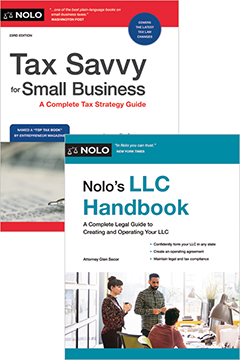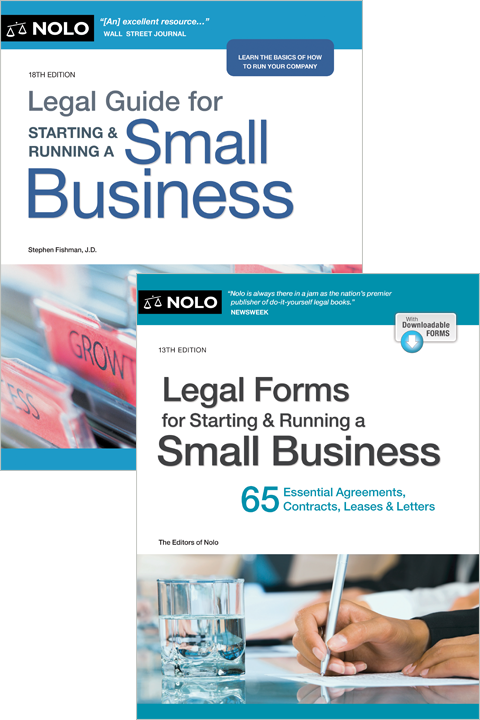In running a corporation, you're no stranger to rules and procedures. Learn the basic steps for dissolving a corporation in your state, including holding a vote, filing dissolution paperwork, notifying creditors, and distributing assets.
With corporations, there might come a time when the people who own and run the business voluntarily decide that it's time to call it quits. If you've reached this point, you'll need to follow some steps to formally dissolve your corporation and wind up your business.
Why You Need to Dissolve Your Corporation
You created a corporation by filing documents with your state and you'll need to go through a similar process to formally dissolve it. Otherwise, your corporation will continue to exist even if you no longer conduct any business through it.
If your company still legally exists, your state filings and other legal obligations continue and the corporation remains open to lawsuits and can incur additional liability. So it's important to follow through with the necessary filings once you decide it's time to close up shop.
Ending your business happens in two phases:
- dissolution, and
- winding up.
First, you dissolve your corporation. Dissolution involves voting to dissolve your business and filing legal paperwork with the state.
Second, you wind up your corporation. Winding up involves settling your debts, distributing remaining assets, notifying creditors and customers of the closure, and closing your accounts, licenses, registrations, and permits.
Each state has its own rules so you might want to seek help from a business lawyer to make sure you follow your state's requirements. Many states allow you to set your own rules and procedures in your corporation's articles of incorporation and bylaws—with some limitations.
Steps to Dissolve Your Corporation
You'll generally need to follow the steps described below to dissolve your corporation. States might differ some, so be sure to check your state's dissolution laws for specific guidance. You can also check out our articles on how to dissolve a corporation in California and Delaware.
You'll also want to make sure you keep good records, such as meeting minutes, of any corporate action taken on dissolution.
Hold a Board Meeting to Adopt the Resolution to Dissolve
The first step in dissolving a corporation usually involves having your board of directors vote and adopt a resolution to dissolve the corporation. Generally, you start the dissolution process by holding a meeting of the board of directors to vote on a resolution to approve the dissolution of the corporation.
Your articles of incorporation or bylaws (or state law) might require a particular percentage of directors to approve the dissolution, such as a majority or two-thirds of the directors. Though many states don't require a minimum vote from the corporation's directors.
Provide Notice to Shareholders About the Dissolution Vote
Once the board has approved the dissolution, the matter can then be submitted to the shareholders for their approval. Many states have rules for when and how the directors must give notice to the shareholders of the upcoming dissolution vote.
Typically, directors must provide the shareholders, regardless of whether they're entitled to vote on the dissolution, written notice of the dissolution vote a number of days before the vote happens. Usually, the written notice must include information about the meeting like:
- the date and time of the meeting
- the location of the meeting, and
- the purpose of the meeting.
States differ on how many days' notice must be given. For instance, some states require between 10 and 60 days' notice while others might require 20 to 60 days' notice.
Your articles of incorporation or bylaws might have additional requirements. For example, your articles might require that notice for a dissolution vote be given by certified mail with return receipt requested.
Have the Shareholders Vote on the Dissolution
Now that shareholders have notice of the dissolution, they must vote on it. State law or your corporation's organizational documents likely require a certain number of shareholders to vote in favor of the dissolution for it to pass. Some states might even allow for dissolution by written consent of the shareholders without the need for a meeting.
Minimum required vote. Many states allow a vote to dissolve to pass as long as a minimum number of shareholders agree. For example, your state's laws might require approval from at least half or two-thirds of the shareholders. However, you can specify different voting requirements in your articles or bylaws as long as the vote required isn't less than a majority.
Vote by written consent. Your state's dissolution laws might allow you to dissolve your corporation by the written consent of the shareholders. This method is an alternative to taking a vote at a meeting. Depending on your state's laws, you might be able to dissolve your corporation as long as a specified number of shareholders (such as a majority, two-thirds, or all) give their written consent.
File Articles of Dissolution With the State
Once you have the necessary corporate approval to dissolve your corporation, your next step is to file articles (sometimes called a "certificate") of dissolution with the state. Most states have a dissolution form that you can file by mail or, in some states, online. In other instances, you might need to create your own dissolution document to submit to the state.
Check your secretary of state (SOS) website (or your state corporate filing office) for your state's dissolution form and filing requirements, including required fees. Even if a dissolution form isn't legally required, it's highly recommended that you file one with the SOS to complete the voluntary dissolution of your corporation.
Steps to Wind Up Your Corporation
After dissolution, your corporation continues to exist for the purpose of winding up its business. "Winding up" generally means resolving all outstanding claims and lawsuits against the company, distributing any remaining assets to shareholders, and closing any open accounts, licenses, permits, or registrations.
Notifying Creditors of Your Corporation's Dissolution
A key task in winding up your corporation is to give notice to anyone with a potential claim against your corporation—including both known and unknown creditors. While providing notice often isn't legally required, usually states allow you to dispose of (dismiss or bar) claims from creditors when you follow the state's notice requirements.
Generally, a notice to creditors must include the following information:
- the name of the dissolved corporation
- the date of dissolution
- information that must be included in the claim (such as a description and date for the claim)
- a mailing address where the creditor can send the claim
- a date when the claim must be received by the corporation (usually the deadline is 120 days from when the creditor received the dissolution notice), and
- a statement that the claim will be barred if not received by the deadline.
The type of notice you send out differs between creditors with known claims and creditors with unknown claims:
- Known creditors: You typically must send them direct written notice of the dissolution, such as a letter or email.
- Unknown creditors: You can usually publish a notice of your corporation's dissolution in a local newspaper.
Providing notice also helps limit your liability and allows you to make final distributions of your corporate assets to shareholders confidently. States have strict rules about giving proper notice so you might want to consult with a business attorney if this is an issue for your corporation.
Paying All Taxes and Receiving Tax Clearance
Some states require you to obtain tax clearance before you file your articles of dissolution. Typically, you can request for the state taxing authority (usually the department of revenue) to send you a letter or certificate that says you've paid all your business taxes and filed all of your returns. If you haven't paid all your taxes and filed all your returns, you'll need to do so before the state can clear your corporation of its tax obligations.
Other states simply require that you pay your taxes and file your returns during the winding-up process. These states don't require you to obtain a certificate. You'll need to check your state rules on dissolution and tax clearance.
For all states, on your final state and federal tax filing, you should check the box marked "Final Return" to indicate that you've dissolved your corporation.
Paying Debts and Distributing Remaining Assets
After selling off ("liquidating") the corporation's assets and taking care of any debts and liabilities, including paying taxes and creditor claims, the corporation should distribute its remaining assets to its shareholders. Shareholders are entitled to an amount proportional to their stock.
For example, suppose Danny, Tucker, and Samantha are the three shareholders of Phantom Corp. Danny owns 50% of the corporation's shares, Tucker owns 30%, and Samantha owns 20%. Phantom Corp. has $100,000 of assets to distribute to its shareholders. According to those stock percentages, the corporation should distribute $50,000 to Danny, $30,000 to Tucker, and $20,000 to Samantha.
Closing Bank Accounts, Permits, and Out-of-State Registrations
Make sure you close all your business bank accounts and credit lines and cancel any permits or licenses or anything else held in your business's name. You'll also want to notify your customers and vendors about your company's dissolution.
If your corporation is registered or qualified to do business in another state, you must file the necessary forms to terminate those registrations. Otherwise, you'll continue to be liable for annual fees and minimum business taxes in those states.
Final Guidance on Dissolving Your Corporation
How you dissolve your corporation will depend on your corporation's articles of incorporation and bylaws as well as your state laws. While holding a shareholder vote and settling debts might seem like obvious steps to the dissolution process, the procedure for carrying out these steps could be complex. Pay special attention to notice requirements, alternative voting methods, and when (or if) you need to receive tax clearance.
You'll want to take the extra time and effort to close your business properly to avoid any future liabilities. If you need additional help, a business lawyer can walk you through the dissolution process, file any necessary forms, and draft dissolution notices.



